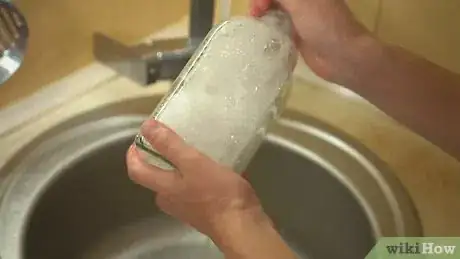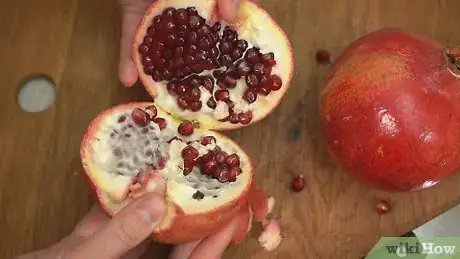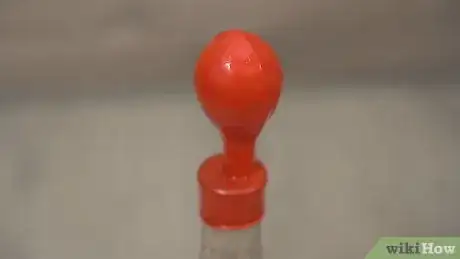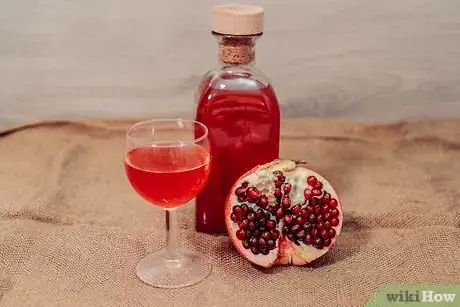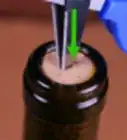This article was co-authored by Christopher Lucchese and by wikiHow staff writer, Jessica Gibson. Christopher Lucchese is a Certified Sommelier affiliated with Home Somm, a Los Angeles, California-based business that does private wine tastings, education and paired wine dinners. Christopher was also a Sommelier for Michael Mina's Bourbon Steak, a Michelin-rated restaurant for three years. He is a Level 4 Diploma Student with the WSET (Wine & Spirit Education Trust). He is also a Certified Sommelier by the Court of Master Sommeliers and has trained with the Wine Scholar Guild and The Culinary Institute of America. He took two semesters at UC Davis for winemaking, viticulture and enology.
There are 8 references cited in this article, which can be found at the bottom of the page.
wikiHow marks an article as reader-approved once it receives enough positive feedback. In this case, 100% of readers who voted found the article helpful, earning it our reader-approved status.
This article has been viewed 135,192 times.
If you've visited a winery, you may have seen pomegranate wine being made. These exotic wines can be a delicious alternative to wine made from grapes. Pomegranate wine also offers health benefits. Research shows that pomegranate wine contains more antioxidants than red wine (made from grapes).[1] If you're ready to try pomegranate wine, gather your wine making equipment and get started.
Ingredients
- 6 pomegranates
- 8 pints (1 gallon) boiling water
- 1 lb (450 grams) raisins, minced
- 2 lbs (900 grams) granulated sugar
- 2 teaspoons acid blend
- 1 teaspoon pectic enzyme
- 1 Campden tablet
- 1 teaspoon yeast nutrient (energiser)
Steps
Preparing Supplies and Ingredients
-
1Gather and clean your winemaking equipment. Purchase your equipment online or at a local supplier of homebrewing and fermenting equipment. Clean your equipment and wine bottles before beginning. Avoid using soap when cleaning since this can leave a residue. Instead, use hot water and scrub with a stiff brush. You can also disinfect the equipment with a bleach solution (1/4 cup bleach for every gallon of water). You'll need:[2]
- A 2-gallon (7.6 L) crock or glass jar
- Long wooden spoon
- A 1-gallon (3.8 L) carboy (a glass container with a small neck)
- An airlock
- A thin plastic tube for siphoning
- Clean wine bottles with corks or screw caps
-
2Clean and cut the pomegranates. Choose pomegranates that are heavy and look deep red. If your pomegranates are small, you may want to use a few more. Wash your pomegranates and cut them in half. Scoop out all of the fruity seeds.[3] [4]
- Discard the skin and the pith since these can make your wine taste bitter.
Advertisement -
3Crush the seeds and sterilize the fruit. To crush the pomegranate seeds, you may want to pulse them in a blender or food processor. Place the crushed seeds into a fermentation crock or glass jar. You'll also need to sterilize the pomegranates using a Campden tablet. Dissolve one Campden tablet in 2 cups of the crushed pomegranates. Return this mixture to to the rest of the crushed seeds.[5]
- To give the Campden tablet time to work, wait 4 hours before continuing on and adding other ingredients.
-
4Combine your other ingredients. Pour 1 gallon of boiling water into your container with the crushed pomegranate seeds. You'll also need to add 1 lb (450 grams) of minced raisins (choose organic so you don't get sulfites), 2 lbs (900 grams) of granulated sugar, 2 teaspoons of acid blend, and 1 teaspoon of pectic enzyme. Mix this together and let it stand until the mixture is at room temperature.[6]
- This mixture containing the sweetened crushed fruit is called must. This will eventually ferment and be strained to create your pomegranate wine.
Fermenting Pomegranate Wine
-
1Activate the wine yeast and add it to the must. Take your teaspoon of yeast nutrient and dissolve it in one cup of liquid strained from your pomegranate mixture. Once you've stirred the yeast completely into the liquid, add the activated wine yeast to the must (the pomegranate mixture).[7]
- Yeast nutrient is specially formulated to keep yeast healthy throughout fermentation.
-
2Let the must set. Cover the fermenting container with your must. Place it in a warm place that's around 60 to 70 degrees F. The must should set for about five days. Stir the must two or three times a day so the solids that float to the top are mixed into the rest of the must. During this time, the liquid will begin to take on a red color.[8]
- You can cover the container with a crock lid or cheesecloth secured with a rubber band. Covering the must will keep bugs out, but should also allow for air flow.
-
3Strain the must. Once the must doesn't bubble very much, you can strain the solids out and siphon the fermenting pomegranate wine must into a carboy or clear demijohn. After the liquid is in your long-term storage container, fit an airlock on the top. This will release gas and keep oxygen from entering the container (which could ruin your wine). Let your wine set for a month.[9]
- If you don't have an airlock, you can place a small balloon or latex glove over the opening of your carboy or demijohn. Poke 4 or 5 pin-sized holes in it and tape it over the opening. This way, gas will escape, but not let oxygen into your container.
-
4Rack your wine. You'll need to siphon off your wine into a clean container so that sediment is left behind. Doing this repeatedly while the wine ferments will prevent your wine from appearing cloudy or foggy. Place the syphon on the end of your carboy or demijohn and attach it to a secondary container to rack it. You should rack your wine:[10] [11]
- For the first time at one month
- At four months
- At seven months
Bottling and Serving Pomegranate Wine
-
1Collect bottles. Wine bottles will allow you to divide and serve your wine just like a regular winery would. You can store your wine in used wine bottles you have collected. With this in mind, it's good to make a habit of collecting wine bottles over a course of months before bottling your own wine. If you don't have any bottles, you can buy them from brewing supply stores.
- The typical wine bottle is 750ml. You'll need roughly five bottles for each gallon of wine you've made.[12]
-
2Bottle the wine. Once your wine has finished fermenting and you've racked it several times so it's clear, bottle your wine. You can usually do this at one year after starting the wine. Use a siphon to move the wine from the fermenting container into your bottles. Fill your bottles partway up the bottleneck and leave a few inches for the cork at the top.[13]
- Be sure to siphon the wine without agitating or stirring the wine too much. This could cause any sediment to make your wine cloudy.
-
3Cork the wine. Soak your corks in a mixture of water that has a Campden tablet dissolved in it. This will sterilize your corks and make them easier to insert in your wine bottles. You can insert the corks by hand or use a corking machine. If inserting them by hand, soak them for 15 minutes. If inserting them by machine, only soak them for a few minutes. Position the cork over the opening of the bottle and push down firmly using your shoulders.[14]
- Some brewery supply stores rent corking machines for home use. This may be a good idea if you're trying it out for the first time. You may want to buy one if you're planning on making wine regularly.
-
4Allow the wine to sit for a year. Most wines are drunk within 12 to 18 months of bottling. You should try to drink your wine around a year after bottling it. Although if you've made several bottles, consider opening and trying your wine about 6 months after bottling. You may find that you enjoy the flavor of your pomegranate wine at this point.
- Wine is not meant to be kept indefinitely. Most fruit wines (including pomegranate wine) should be used within 3 to 5 years of bottling.
-
5Finished.
Community Q&A
-
QuestionWhich other fruits can l use to make wines?
 Community AnswerAlmost any. My favorites are berries (blackberries, blueberries, and raspberries). The frozen bags of mixed berries sold at most stores make delicious wine. I've even had good success with cranberries. Peaches, plums, pears, apples, mangoes and many others also work well. I don't recommend watermelon or figs.
Community AnswerAlmost any. My favorites are berries (blackberries, blueberries, and raspberries). The frozen bags of mixed berries sold at most stores make delicious wine. I've even had good success with cranberries. Peaches, plums, pears, apples, mangoes and many others also work well. I don't recommend watermelon or figs. -
QuestionHow do you remove the haze from the pomegranate wine?
 Community AnswerA haze or cloudy appearance in pomegranate wine may be removed by racking the wine. Racking involves switching the wine batch from one barrel to another.
Community AnswerA haze or cloudy appearance in pomegranate wine may be removed by racking the wine. Racking involves switching the wine batch from one barrel to another.
Things You'll Need
- A 2-gallon (7.6 L) crock or glass jar
- Long wooden spoon
- A 1-gallon (3.8 L) carboy (a glass container with a small neck)
- An airlock
- A thin plastic tube for siphoning
- Clean wine bottles with corks or screw caps
- Measuring spoons
References
- ↑ http://www.ncbi.nlm.nih.gov/pubmed/17651077
- ↑ http://extension.uga.edu/publications/detail.cfm?number=C717
- ↑ http://www.wine-making-guides.com/pomegranate_wine.html
- ↑ www.pomegranates.org/index.php?c=7
- ↑ http://extension.uga.edu/publications/detail.cfm?number=C717
- ↑ http://www.wine-making-guides.com/pomegranate_wine.html
- ↑ http://extension.uga.edu/publications/detail.cfm?number=C717
- ↑ http://extension.uga.edu/publications/detail.cfm?number=C717
- ↑ http://extension.uga.edu/publications/detail.cfm?number=C717
- ↑ http://www.wine-making-guides.com/pomegranate_wine.html
- ↑ http://winemakersacademy.com/racking-lees/
- ↑ https://www.mainbrew.com/one_way_to_bottle_your_wine-ExtraPages.html
- ↑ https://www.mainbrew.com/one_way_to_bottle_your_wine-ExtraPages.html
- ↑ https://www.mainbrew.com/one_way_to_bottle_your_wine-ExtraPages.html
- ↑ http://pomegranateinformation.com/pomegranate/pomegranate-wine/
- ↑ Christopher Lucchese. Certified Sommelier. Expert Interview. 11 March 2019.
About This Article
To make pomegranate wine, you'll need a 2-gallon jar, a 1-gallon carboy, an airlock, and a thin tube for siphoning. Start by crushing pomegranate seeds and sterilizing them in the jar using a Campden tablet. After a few hours, add boiling water, minced raisins, granulated sugar, acid blend, and pectic enzyme. Next, add activated wine yeast, let it sit for 5 days, and strain out the solids. Once you've strained the mixture, siphon it into the carboy and seal it with the airlock. Finally, let the wine ferment for 1 year, siphoning it into a new container every few months. To learn how to bottle pomegranate wine after it ferments, scroll down!
